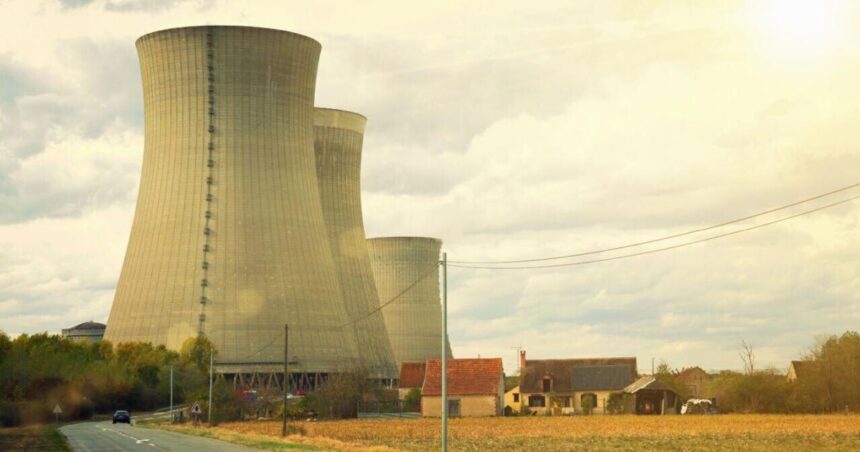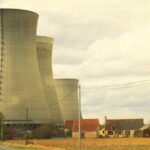In June, Yemen signed its first-ever Country Programme Framework (CPF) with the International Atomic Energy Agency (IAEA). Representing Yemen at the public announcement was Mr. Haytham Adbulmomen Hassan Shoja’aadin, Resident Representative of the Republic of Yemen to the IAEA.
Mr. Shoja’aadin fortified this union with the IAEA Deputy Director General and Head of the Department of Technical Cooperation, Mr. Hua Liu. The agreement places both parties in a five-year working relationship in the CPF, aimed at developing the West Asian country’s national nuclear energy development goals.
A New Atomic Era for Yemen
The 2024 agreement will usher in a new age of atomic restructuring and economic improvement in the Republic of Yemen. The focus will be on the national economic and infrastructural goals for Yemen; it lays out a plan to implement “nuclear technology and technical cooperation resources” where possible.
The 2024-2029 CPF will work mainly in five key areas of Yemeni development:
- Nuclear science and technology;
- Water resources and environment;
- Health and nutrition;
- Food and agriculture;
- Nuclear and radiation safety.
There are officially 178 IAEA member states, with the majority — including the world’s economic big players — signing on in 1957. Such a positive step wasn’t possible for Yemen before, considering the republic’s domestic troubles, with the latest civil war beginning in 2014.
Yemen’s Clean Atomic Record
Yemen’s atomic energy ambitions have been there since it signed up to IAEA membership in 1994.
Yemen also carries other nuclear-associated accolades, such as an unblemished nuclear belligerence record. Yemen has never pursued a nuclear weapons program. Additionally, the republic agreed to the International Convention on the Physical Protection of Nuclear Material.
Most of today’s world has a connection in some way to an atomic energy framework, with the spectrum ranging from moderate to highly integrated. Naturally, the countries that signed their CPF earlier on are highly industrialized G20 nation-states.
The Big Nuclear Players
The Nuclear Energy Institute lists the top nuclear energy-supplied countries in 2023. At the top of the list for gigawatt hour generation (GWh) are:
- The United States, with 779,186 GWh;
- China, with 406,484 GWh;
- France, with 323,773 GWh;
- Russia, with 203,957 GWh;
- South Korea, with 171,649 GWh.
While these numbers represent the total GWh produced, it looks different when counted as a total percentage of all electricity generated:
- France has almost 65% nuclear electricity;
- Slovakia comes second with 61%;
- Hungary is next with 49%;
- Finland’s nuclear energy accounts for 42% of all its electricity;
- Belgium comes in fifth with 41% of nuclear-generated electricity.
While the picture looks good for Europe, Yemen’s new agreement marks an upturn in developing nations’ atomic energy fortunes.
Some groups, like Brookings in 2012, argued that the developing world has had no choice but to move into nuclear development. With the Western world squabbling over net-zero policies and cleaning its air, emerging nations have little alternative.
A Balancing Act for Developing Nations?
In the modern globalized era, the developed world has a somewhat unfair dual obligation to its energy needs and international profile. Those wanting to be at the same table as their G20 counterparts must now incorporate clean nuclear power to meet global warming reduction quotas.
George Smeeton writes in an Energy & Climate Intelligence Unit (ECIU) review from 2018 on how the developed world can take part. The Paris Agreement’s plan to meet a 1.5°C global warming limit sees zero global carbon emissions as the only solution. Most countries will peak by the 2050s. “For developing nations,” writes Smeeton, “that can mean the 2050s or 2060s.”
Nuclear Energy Hurdles
The World Nuclear Association (WNA) upholds the economic benefits of a stable nuclear power program, but caution there are challenges involved in bringing nuclear energy into any country.
Some of the many economic benefits to forming a nuclear energy program include:
- Unless there is access to cheaper fossil fuels, nuclear power is a cost-effective way to generate electricity.
- While initial capital needed for nuclear power plants is higher than for fossil fuel-based plants, fuel costs are a minor part of the operation.
- Nuclear plant system costs are lower than other “intermittent renewables.”
Meanwhile, some drawbacks are evident in general:
- Nuclear power station builds typically go over budget because of underestimated delivery expenses.
- Often, waste disposal and decommissioning costs are not factored into the overall costs for nuclear plants.
- Finding investment for a long return on a high-capital investment infrastructure project is fraught with difficulty.
How Atomic Energy Builds Economies
Good news for developing nations comes from a 2022 National Renewable Energy Laboratory (NREL) review. The “Nuclear Innovation: Clean Energy Future” (NICE Future) paper outlines the long-term fiscal benefits of atomic energy generation.
Citing data from an IAEA study, the NREL report highlights countries who seek to join in nuclear programs may have slower job development initially. This is partly due to the need to import expertise, technology, and equipment. Nevertheless, the added job growth and subsequent revenues generally bring in an additional 0.2% to 0.3% GDP growth.
In the Conversation
Yemen is one of many developing countries to enter a CPF with the IAEA, following the lead of other nations, Cabo Verde, Guinea, and The Gambia, in 2023. The future of renewable energy may differ for every country, but there is a certainty atomic energy will be in the conversation for most.





